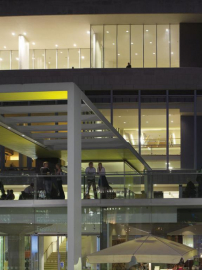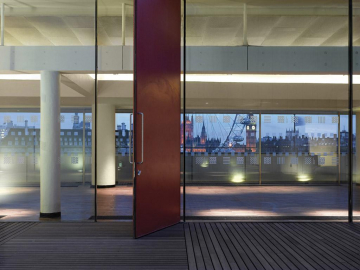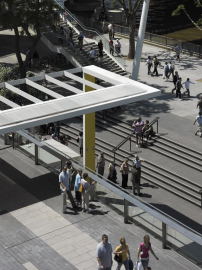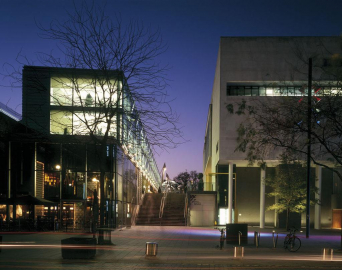Royal Festival Hall
Architecture is as much about looking back as it is striving for the new. The basis for an architects education is about precedent, and an understanding or interpretation of our built environment.
Few buildings in Britain generate the public affection afforded to the Royal Festival Hall.
The transformation project has been an opportunity to refurbish this extraordinary building; its clarity of function, composition and organisation; its detail, materials, colour and lighting. The Royal Festival Hall was the first significant public building built after the war and the first modernist building to be Grade I Listed. This recognition came however, at a time when it had become almost unrecognisable, through first radical and later careless change. On one level the project has been a recovery of the clarity of the original plan, its theory and composition. On another it has been about the management of change.
This change has affected every fibre of the building s fabric. The building has a new setting, a thriving public realm, radically different from 1951 yet closer in spirit than at any time since. Its foyers have been rediscovered; the plethora of Southbank Centre administrative offices moved to the New Building alongside the railway. Its auditorium has been transformed, almost every surface removed and retuned to live up to the acoustic aspirations the original designers acknowledged they never quite achieved, and to provide the production facilities and audience comfort of a concert hall for the new century.
Significant measures to reduce the overall energy usage of the building and to reduce its reliance on non-renewable, greenhouse and global warming sources of energy have been implemented. Building services have been replaced throughout with new infrastructure and plant installed and an integrated building management control system, providing reliable and controllable heating and ventilation. Two 140m deep boreholes supply water to heat exchangers, providing comfort cooling to the Royal Festival Hall and New Building, offices and retail units. The Auditorium ventilation system has been reversed to become low-level, low-velocity supply and high-level extract for greater efficiency. A new controllable lighting system enhances the natural light in the foyers. Listed building status necessitated careful consideration for the use of all materials. Specialist timbers and stone were removed and restored to suit new locations. Doors and ironmongery were catalogued and set aside for reinstatement.
The project, took 24 months to realise on site; as planned. It cost £117.9m. It was funded with the support of major grants from Arts Council England, the Heritage Lottery Fund and the Department for Culture Media and Sport. It was visited by 250,000 people on its reopening weekend. Its reopening season was heralded by unprecedented positive International coverage, including 1,900 written articles. The completed project has received RIBA and Civic Trust Awards and in particular was shortlisted for the RIBA Stirling Prize. The Royal Festival Hall has always been at the cultural heart of London. It is now seen as a world class concert hall in a setting worthy of its festival beginnings.






